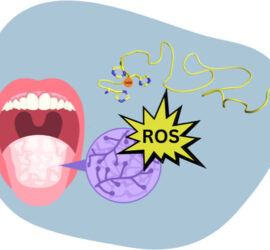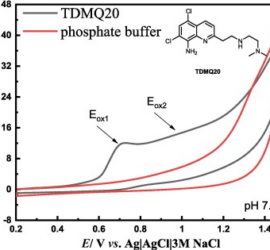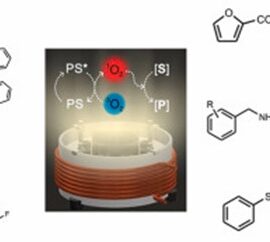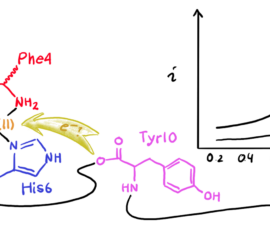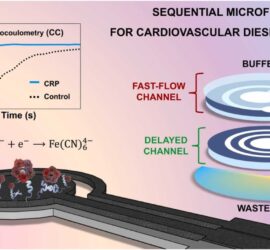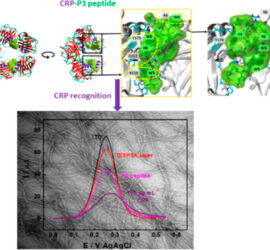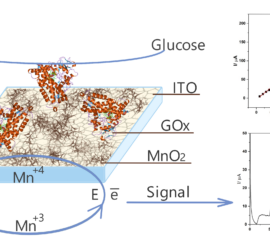Peptides is Magda’s favourite topic. So far, she has mainly focused on beta-amyloids. However, in cooperation established with the University of Wroclaw she has had the opportunity to study a new group of peptides. In our new article published with Joanna Wątły’s group this is motivated by “[t]he necessity to […]
Publications
Collaboration is extremely important to us. Gaining new knowledge, both practical and theoretical, is also extremely important. For this reason, Magda went on a 6-month internship to Professor Alvaro Colina’s group in Burgos, Spain. The cooperation turned out to be very successful because shortly after her return our first article […]
Magda once again cooperated with the Warsaw University of Technology (prof. Tomasz Kliś). As part of this cooperation, a new article entitled was published in Dyes and Pigments. The group from WUT obtained 5 boron-containing dyes. These substances were tested as photosensitizers for singlet oxygen activation. Among the studied compounds, […]
Bren recently published, along with fellow younger chemists, an Angewandte Chemie Viewpoint Article entitled: “Towards a Sustainable Future: Challenges and Opportunities for Early-Career Chemists”. This collaboration was a result of his active involvement with the International Younger Chemist Network (IYCN), where he also serves as a board member. The article […]
In a follow-up from our previous paper on point-of-care sensors for C-reactive protein (CRP), an article based on the same principle was just published in ACS Sensors. There are two main differences: instead of a peptide as recognition element, we used a nanobody, and we used a new smartphone-based potentionstat. […]
The next paper in Magda’s series of articles on the redox behaviour of β-amyloids relevant for Alzheimer’s disease has just hit the press. Here we have been looking at how the presence of a redox-active amino acid, tyrosine (Tyr), affects the oxidation of a Cu(II) attached to the amino terminus […]
Measuring CRP levels in blood usually requires sending a blood sample to the lab for an ELISA test. This takes time… the results typically come only the next day. It would be so much more convenient if you could get the result directly in your doctor’s office. In our latest […]
Some papers just glide through review and get published with seemingly minimal effort. This is not one of those! After more than a year being bumped between different journals and arguments with both editors and reviewers it is finally out. The manuscript is Kasia’s brainchild. Her main line of work […]
Our group is open to scientific cooperation, which always brings good results and sometime also good publications =). This time, scientists from the Warsaw University of Technology proposed a collaboration with Magda that resulted in a publication in Dyes and Pigments. The group from WUT is known for the synthesis […]
Maybe consider an alternative to Prussian Blue when measuring H2O2. In a recently accepted paper we investigate electrodes based on manganese dioxide for determination of H2O2 and demonstrate this by addition of glucose oxidase to the electrode to make a glucose sensor. MnO2 is a good catalyst for decomposition of […]

